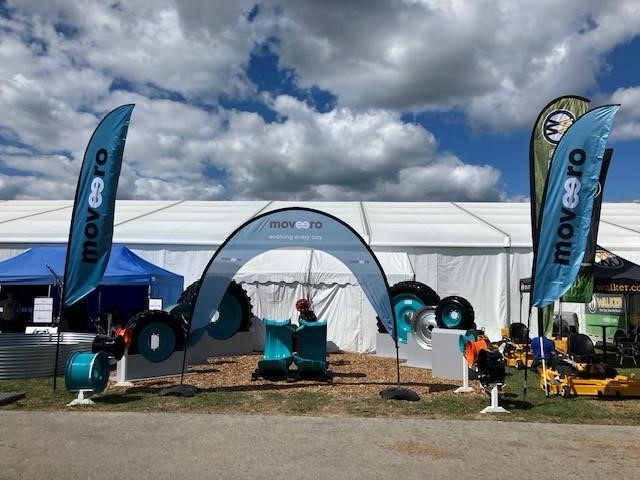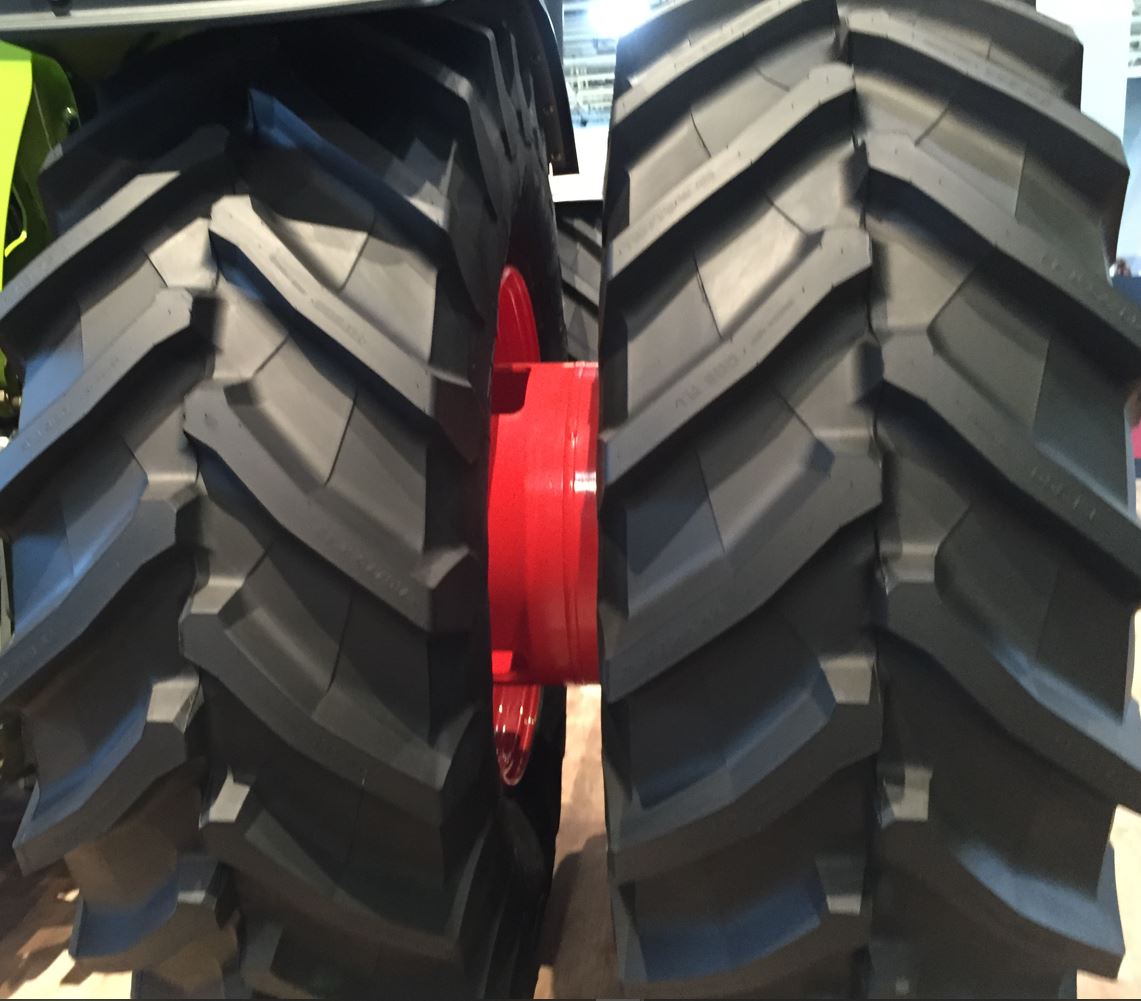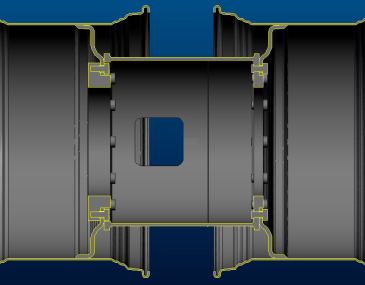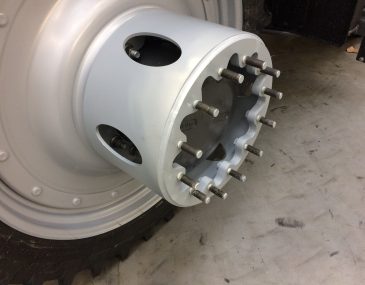
Home / moveero develops unique tool to design dual wheel solutions

In agricultural applications which require a high pulling force from the tractor, for example when cultivating or ploughing, maximum engine torque must be transmitted from the tractor to the ground to optimize performance. To achieve this, it has become increasingly common for farmers to use a dual wheel assembly, on the rear axle, when carrying out these activities.
However, when using dual wheels with a clamp on system, early failure can occur on the rear wheels, as standard wheels are not designed to carry the extra loads coming from the outer dual wheel set up.
To address this problem, moveero has carried out a dedicated field-testing programme and, using data collected, the company’s Research and Development team in Brescia, Italy has developed a unique tool to design wheels, specifically for dual assemblies. As a result, moveero is now able to design, develop and test wheels for use with dual systems, and so resolve the durability issues.
Current dual wheel deployment
A range of different solutions are available for dual wheel usage. For example, tractors can be ordered with optional bar axles (that is, axles designed to host a second wheel), or spacers can be used to connect a second wheel (the spacer is fixed on one side of the original tractor wheel and is able to host a second wheel on the other side). With both solutions, the added wheel transfers its load directly to the hub, without compromising the performance of the original tractor wheel.
The solution most preferred by farmers, is the so called ‘Clamp On Dual’, where an outer wheel is clamped to the inner one using a system of bars with clamps and a spacer. This solution is often preferred for two reasons, Firstly, the ease of mounting compared with the other two solutions (there is no need to rotate the outer wheel, as there is no bolt hole circle on the outer wheel to be aligned with one on the inner wheel), and secondly, its competitive cost compared to the other solutions, such as a tractor with bar axles (double hub), or a second wheel mounted on a specific spacer.
The main drawback of the clamp on dual system is that the load acting on the outer wheel is transmitted to the disc of the inner wheel. Due to the wide distance, this causes a significant lever effect, which results in very high stress levels on the inner wheel.
During field testing of the clamp on dual system, moveero found that when a dual wheel configuration was used, the stress on the inner wheel disc and weld area was more than two times higher than when just a single wheel was operating. Doubling the stress can lead to a shortening of the wheel life by up to twenty times. These increased stress levels could also result in fatigue cracks at the rim to disc weld area and at the disc bolt holes area.
The target: a dual wheel test standard
Recognizing the requirement of both OEMs and farmers for an effective dual wheel solution, moveero’s Research and Development team targeted the creation of a reliable design tool to verify wheels for dual applications at the design phase.
Normally at this stage, wheels are proven through indoor fatigue testing, which simulates the rotation under vertical and lateral loads. By defining the correct specific load to be applied and the number of cycles of survival, the expected service life can be verified through accelerated testing in just a few weeks.
The moveero team targeted the development of a specific Dual Wheels Test Standard, which would simulate the dual field usage through lab testing. This will enable farmers to confidently use the Dual Tire System, without worrying about early wheel failures, and without the need for expensive bar axles or spacers to be used.
Maximilian Oster, Fendt Design Engineer, said: “To meet the highest standards we need constantly improved components. The test campaign results were an important rim and dual wheel application design milestone for us. This know-how will influence our products to provide even better longevity performance and unnecessary expenses.”
Product innovation: developing wheels for a dual system.
The Test Standard has been achieved through a number of different steps, starting from the measure of wheel stress in single and dual configuration in the field and the identification of the loads acting on the wheel, to the development of a specific virtual model of the dual wheel system to simulate behaviour under different field load cases.
These activities have delivered a deep understanding of the different factors acting on dual wheels, enabling the moveero team to use this knowledge to develop a general approach to the design of wheels for dual use, regardless of the tractor, load and tire requirements.
As a result of this work, the moveero R&D team devised a specific method to calculate the test load to be applied (depending on the specific values case by case) and the minimum number of cycles of survival to allow an acceptable durability in field, should a clamp on dual system be used.
moveero is able to start from the basic usage data (load, tire, offset etc.) and design and test a wheel, to work with clamp on dual system, without the problem of early failure.
This allows moveero to offer a unique service, based on and verified by internal data, to protect customers from the problems of early wheel failure when they use the most common clamp on dual system solutions.


Release date: February 28, 2023